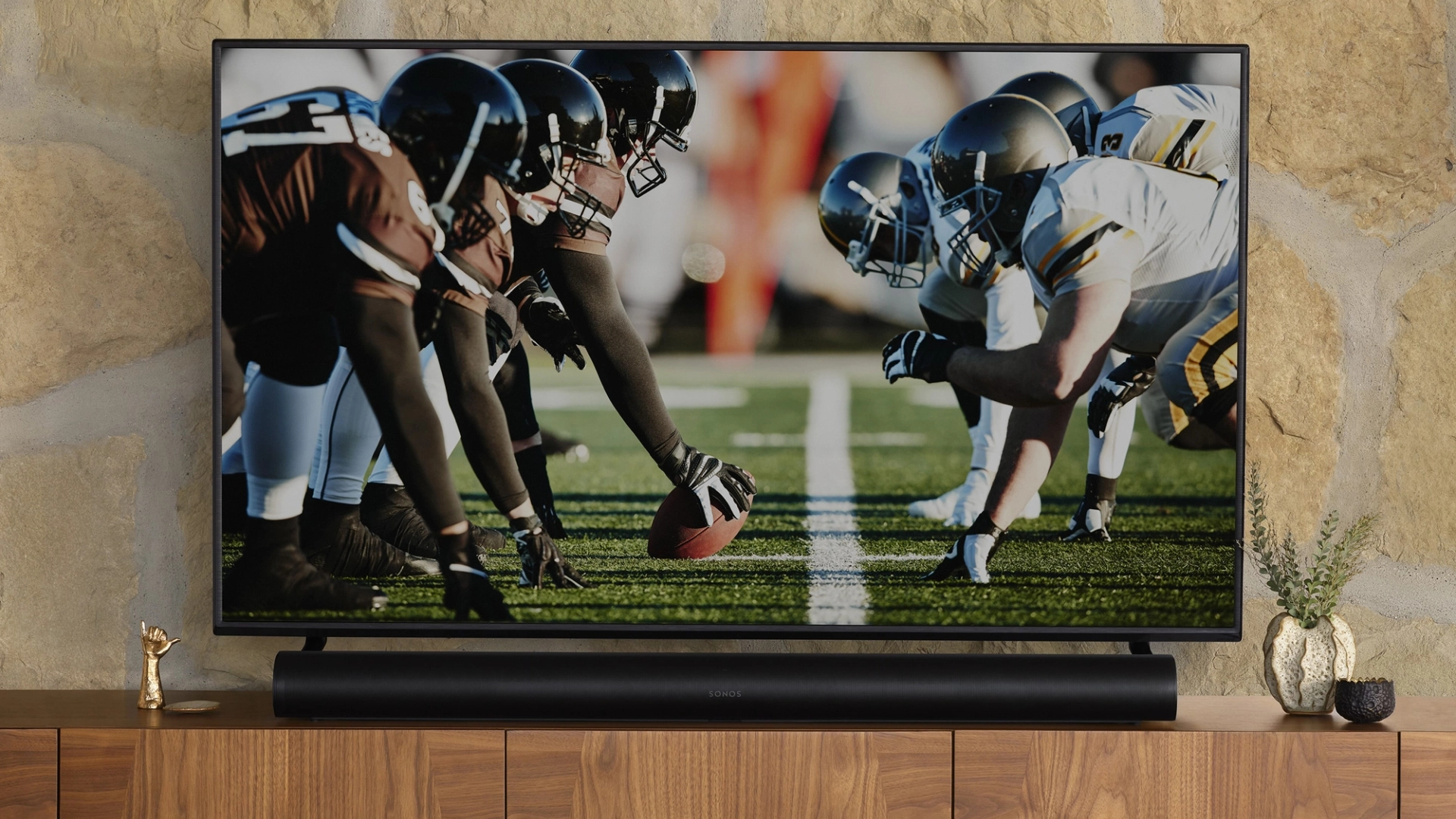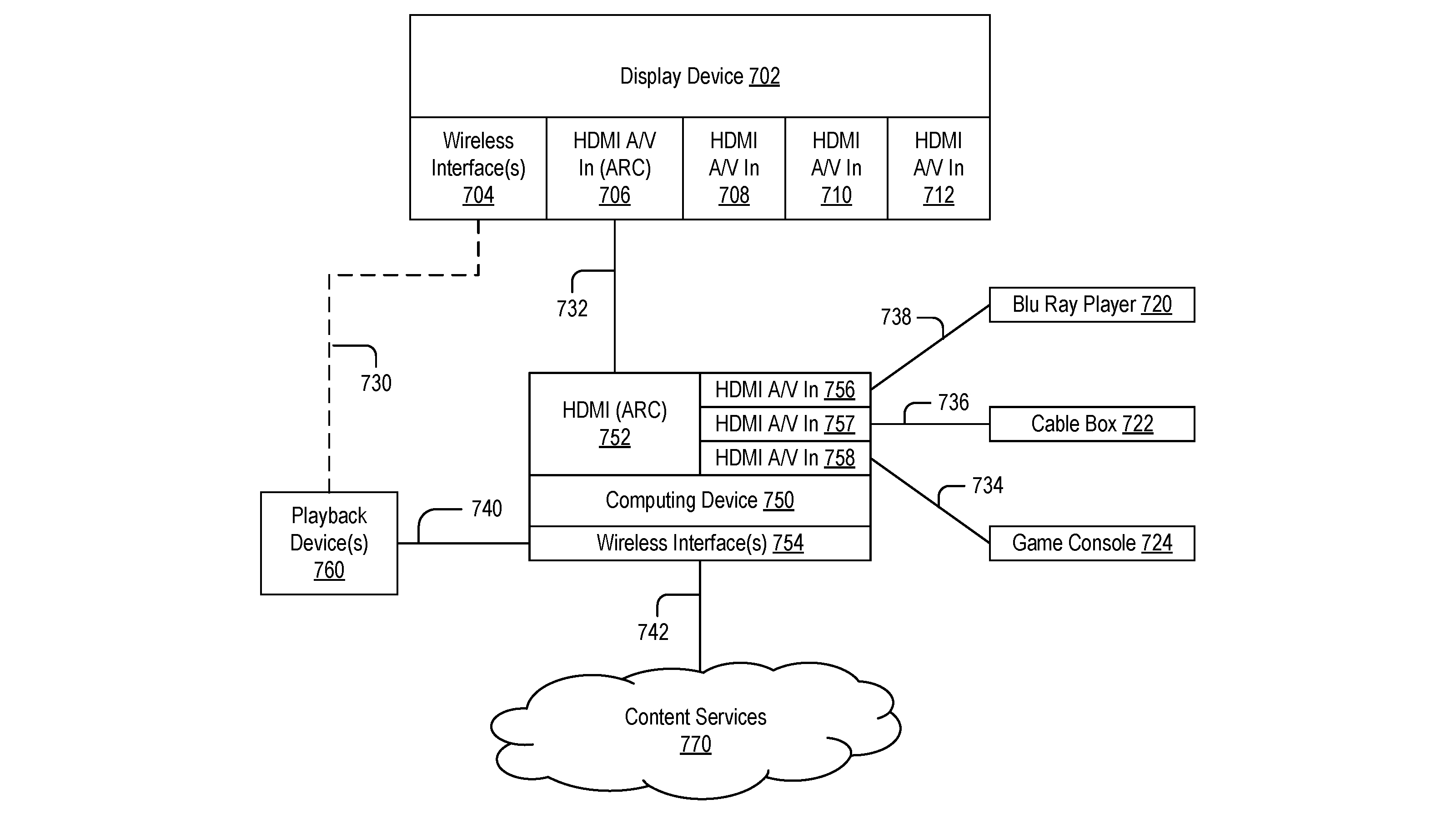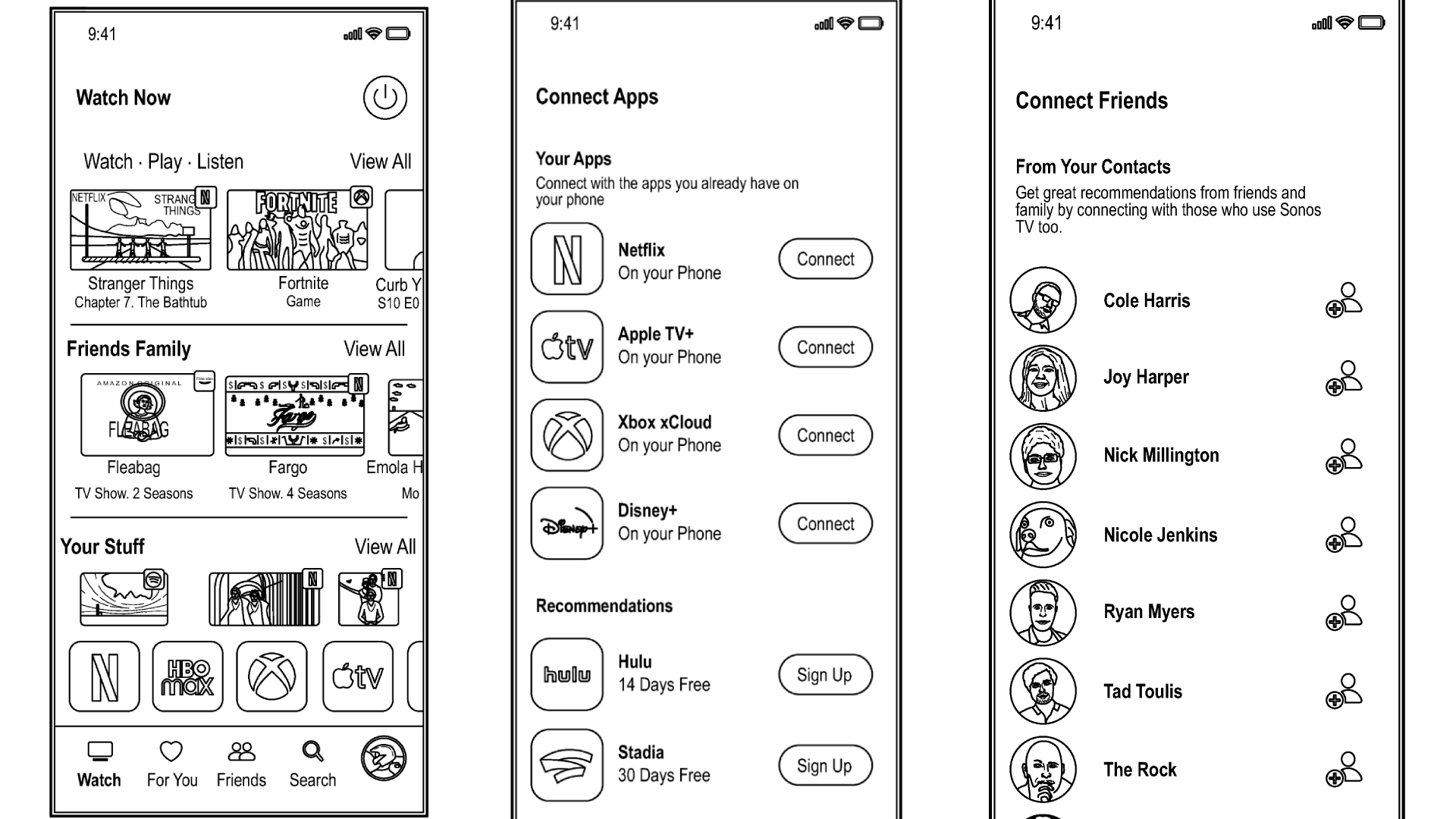
A patent by Sonos, which was filed on December 14 last year, suggests the company’s plan to develop a streaming box to rival Roku and Apple TV might also feature multiple HDMI ports, presumably for connecting external devices such as soundbars, games consoles, Blu-ray players and so on.
Recent analysis of the Sonos TV patent was released via Lowpass, which discussed how it would allow you to connect the all-in-one media box to one of the best TVs with just a single HDMI cable.
Although it hasn’t been officially confirmed by Sonos, who make some of the best wireless speakers around, this new device could be released in late 2024/early 2025 and cost roughly $150-200 if an earlier report by Bloomberg is true. Sonos TV will reportedly feature apps from streaming services such as Netflix and Disney Plus, and also support Dolby Vision and Dolby Atmos.
If the patent’s multiple HDMI ports end up making their way into the device, the Sonos TV may be able to sync audio across a whole sound system, acting as an A/V receiver of sorts. Its single connection is also reminiscent of the One Connect Box that you’d find on some Samsung TVs – such as one of the best OLED TVs around, the Samsung S95C – which enables multiple external devices to be connected to a box that is subsequently connected by a single cable to the TV, keeping things tidy.

It’s also suggested that Sonos TV may have a new control app, much like the one that its speakers and soundbars use for setup and adjusting settings, rather than a remote control. It seems Sonos are championing a second screen control method rather than a remote as the patent reportedly says that “the use of a smartphone (...) is far simpler than navigating a conventional television menu”.
Another large part of the patent explores a ‘Friends & Family’ feature that will allow users to follow each other and make movie and TV show recommendations, adding yet another layer to the Sonos TV device.
Interestingly, there is also mention of the Sonos TV not including an app store. The patent suggests that it would leave that to the app management and updates of streaming apps to control the device itself, replacing the built-in app stores found in other streaming devices from Amazon, Roku and Apple.
It’s worth stressing at this point that this is all speculation, as nothing has been officially confirmed by Sonos. This information has been gathered from a patent application, which is still pending so that means there will likely be significant differences between it and the final product. But, if Sonos does manage to pull the Sonos TV off, what does this mean for the future of home theaters?

Analysis: Sonos – the future media hub to beat?
Sonos has always been about connectivity and smart streaming. The ability to control its speakers in different areas of a house by pairing them together in one app has been one of its strongest features.
Reading deeper into the patent, it seems like it now wants to do this with the video side as well, further integrating devices into one seamless control app. If Sonos really can pull off a more cable-tidied approach, similar to Samsung’s One Connect, whilst also serving as a streaming unit, this really could be an all-in-one solution.
The more you read into the patent, the more it starts to sound like an A/V receiver of sorts. The Sonos TV seems to go beyond a simple streaming box and more into a home entertainment hub system that will allow users to connect all their devices together to one box, which will then pass the sound evenly around the TV, Blu-ray, soundbar and so on all from one cable, but also be a media center for all streaming apps such as an Amazon Fire Stick or Roku Stick.
There isn’t a great deal about whether the sound from the Sonos TV box itself could then be passed wirelessly to surround speakers, but in theory this would create a solution to any sync issues. If this could be achieved, the Sonos TV really would be a jack-of-all-trades.
It’s fun to speculate on all this but just to reiterate, none of this is confirmed or official and the Sonos TV could be a completely different product altogether. If, however, it does achieve in doing all the above, it’s unlikely it’ll only be $150-200…







